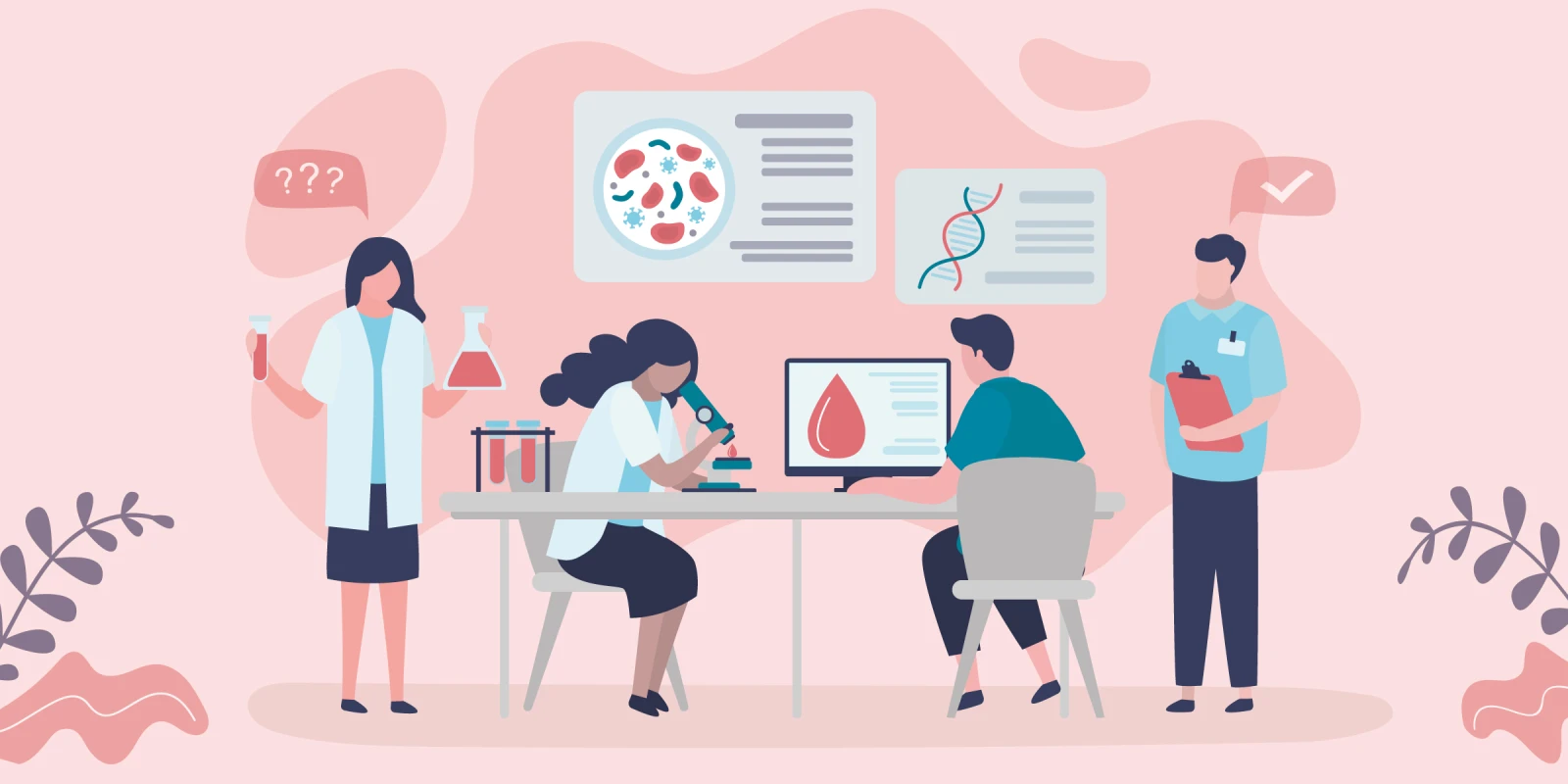From behind the computer screen, in my duties as a pathology and laboratory medicine resident, I reviewed my latest consult: an order of platelets and fresh frozen plasma for an elderly male in the ED with features of hemorrhagic shock secondary to a massive upper GI bleed. Notably, he was on prophylactic aspirin. I reviewed his laboratory parameters, including his hemoglobin, which was significantly decreased due to the acute bleed, and his platelets, which were low but not ominously so. Interestingly, his international normalized ratio (INR) was also prolonged; however, he was not on warfarin and his liver enzymes were within normal limits. With all of this in mind, I paged the practitioner.
I received a call back momentarily from the internal medicine resident, and I inquired about the patient’s status and condition. She relayed that the team had identified an actively bleeding duodenal ulcer, which was unable to be controlled endoscopically. They were preparing to transfer the patient to interventional radiology in order to control the bleed. I relayed that I thought it would be best to also consider IV vitamin K, in addition to the plasma, to improve his INR. Unfortunately, our call was swiftly interrupted as she received another page.
I used this time to discuss the case with my attending physician, who agreed with my assessment and recommended a platelet mapping assay and thromboelastography (TEG) to assess the degree of platelet inhibition by aspirin. I paged the resident again in order to convey these additional recommendations. I never received a call back, understandably so as she and the team were probably busy stabilizing the patient. I figured I would electronically secure-chat her my attending physician’s recommendations, including that, if possible, the samples for platelet mapping and the TEG be drawn prior to transfusion. Ultimately, the results of these tests would help us understand the patient's uninhibited platelet reserve.
I received an electronic response within a few minutes, and instantaneously my face flushed and my heart sank.
“Honestly, he’s acutely decompensating and we’re just trying to stabilize him. They will get the labs when they can. We have bigger priorities right now.”
Of course, I understood her annoyance and impatience. Formerly a general surgery resident, I was also once at the forefront of medicine, dousing emergent fires and attending to critical patients. Now a pathology and laboratory medicine resident rotating on transfusion medicine, I am fortunate to be behind the scenes, entrusted with the responsibility of recommending which assays or blood products may be most beneficial for any given patient. This understanding of her perspective, however, did not lessen my hurt or ameliorate my frustration, as my only intention had been to provide patient blood management (PBM) to best guide clinical decision-making.
Although PBM is a relatively new concept, the benefits certainly outweigh the risks of blood product transfusions. According to the Association for the Advancement of Blood and Biotherapies, PBM “is an evidence-based, multidisciplinary approach to caring for patients who might need a blood transfusion. PBM encompasses all aspects of the transfusion decision-making process, beginning with the initial patient evaluation and continuing through clinical management. These techniques are designed to ensure optimal patient outcomes, while maintaining the blood supply to guarantee that blood components are available for patients when they are needed.”
Blood product transfusions entail multiple serious risks, including transfusion-associated reactions and blood-borne infections. Additionally, recent literature has found that even inpatients who received a single unit of red blood cells were more likely to acquire a nosocomial infection, prolonging their length of stay and increasing their probability for hospital readmission within the near future. There is also little evidence for treating bleeding patients on aspirin with platelet transfusions; in fact, this practice may be doing more harm than good. Most physicians, however, are unaware of the dangers of transfusion. Thus, PBM begins with the thorough evaluation of blood product orders, which may minimize the risks of transfusion while optimizing patient outcomes.
Undoubtedly, patients who are in critical condition should be considered for potentially life-saving transfusions. In my consult case, the role of PBM was simply to recommend additional assays and interventions that may benefit the patient. Unfortunately, unlike other consults, transfusion medicine consults are uninvited and very often unwanted. Practitioners are unaccustomed to receiving a call or page from blood bank physicians, whose aim is simply to obtain clinical clarity and ensure appropriate PBM. But, this uninvited transfusion medicine consult may ultimately lend some new and valuable knowledge to health care professionals. Fortunately, the practice of PBM has been gaining popularity in recent years, especially since the rise of the COVID-19 pandemic and ensuing blood product shortage.
Of course, I recognize that my disappointment and discouragement in this case stem partly from my own interpretation and internalization of the other resident’s response. Although in my new residency role I now reside behind the computer screen, so to speak, I am still very much committed to improving patient care. Despite the fact that pathology and laboratory medicine is not necessarily considered a patient-facing medical specialty, laboratory and tissue assays and diagnoses are integral to dictating patient management. Ultimately, it is my hope that interdisciplinary clinical management continues to evolve and mature, and that PBM becomes more widely accepted within the coming years.
Have you ever offered an "uninvited consult"? Share in the comments!
Dr. Giby V. George is currently a Pathology and Laboratory Medicine resident at the University of Rochester Medical Center in Rochester, NY. In her spare time, she enjoys hiking and exploring the outdoors, watching basketball, and spending time with her family.
Image by Aleksei Naumov / GettyImages







